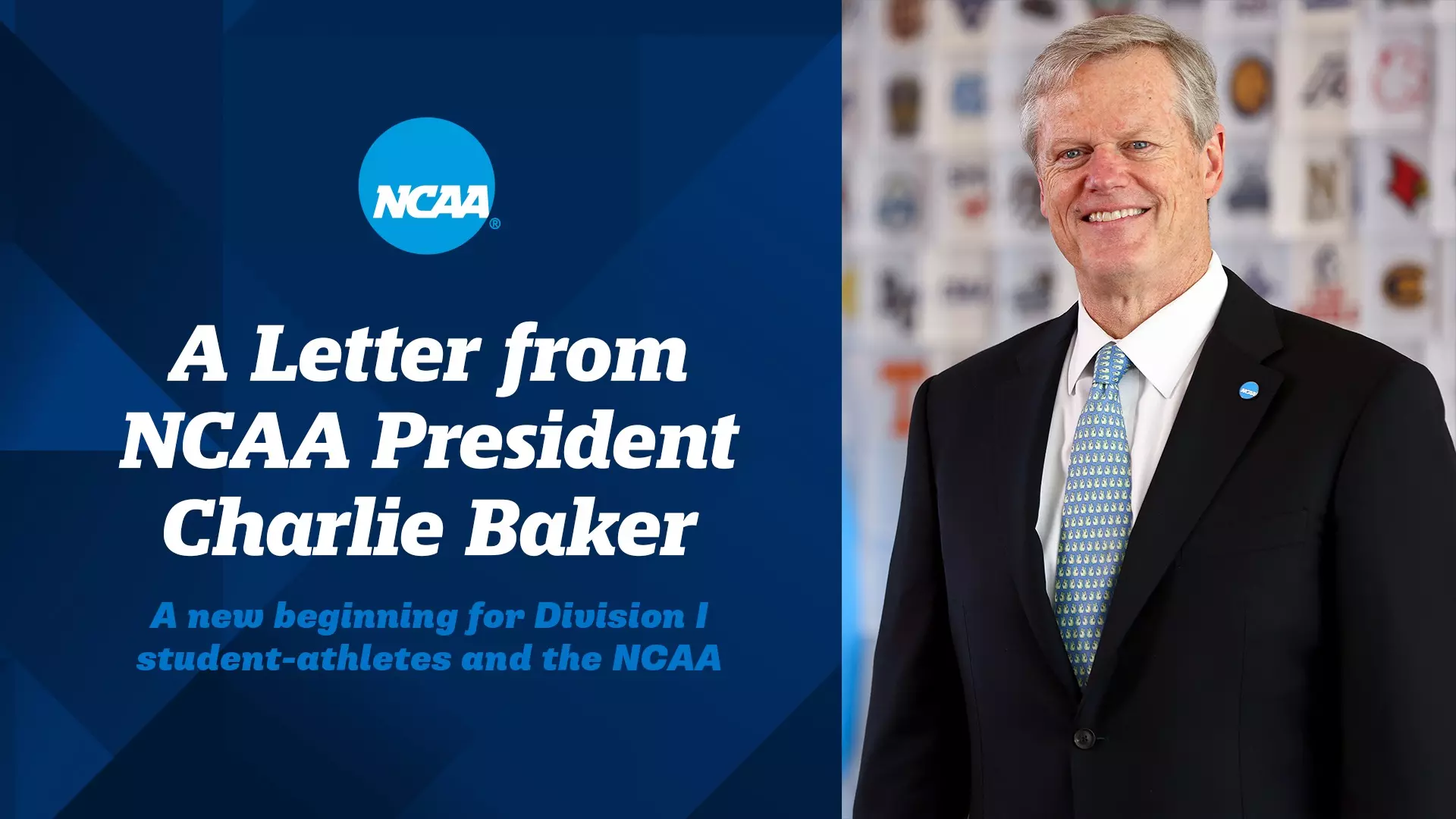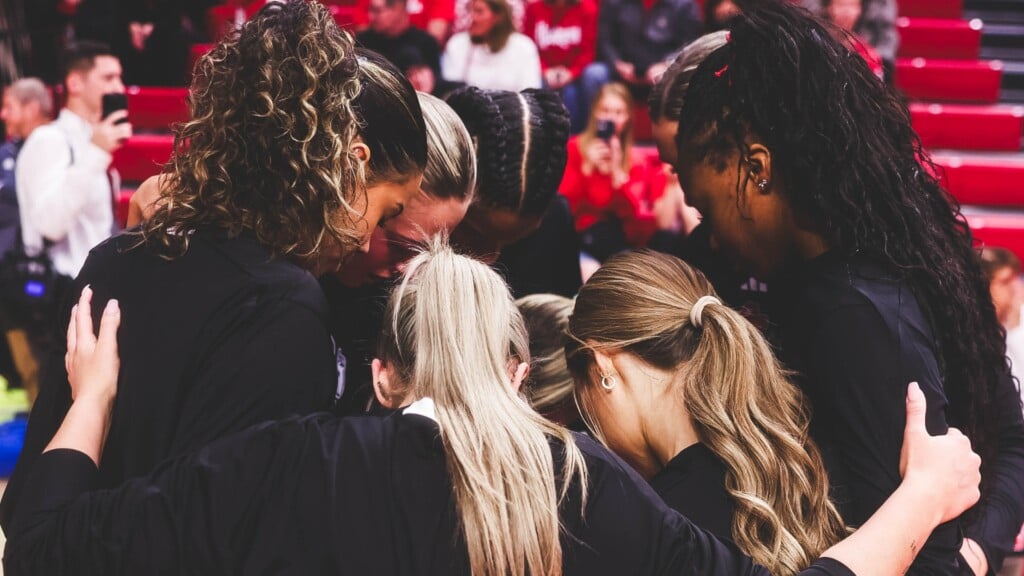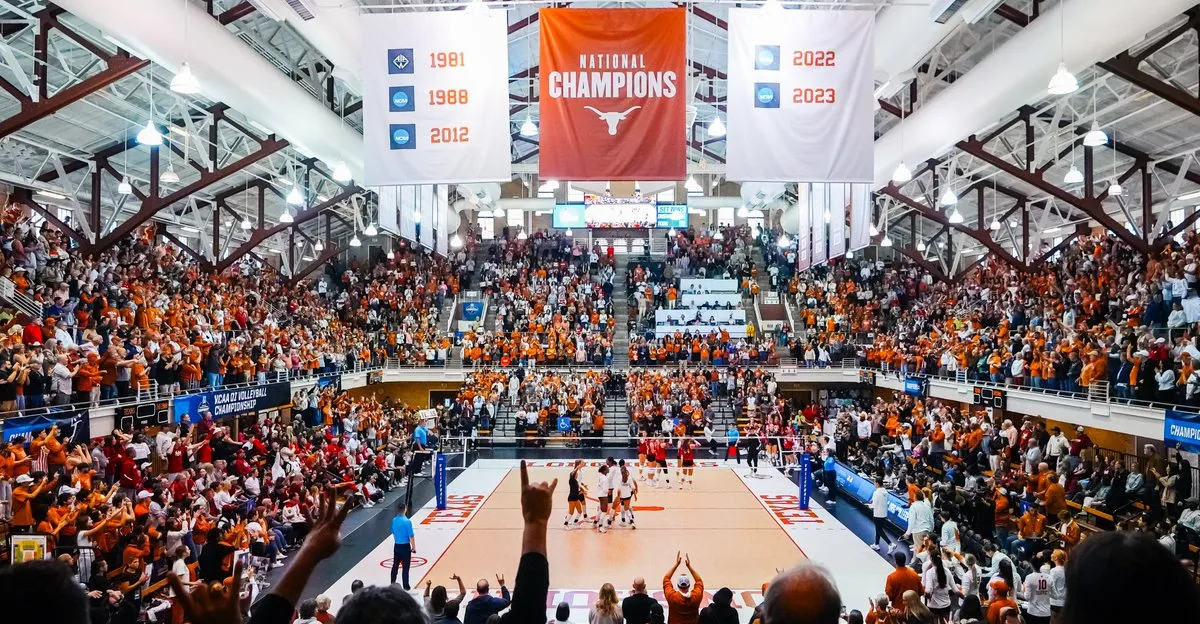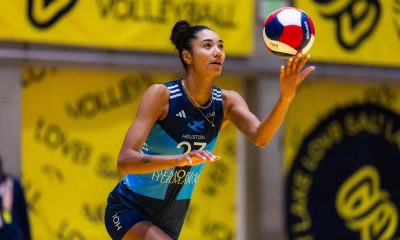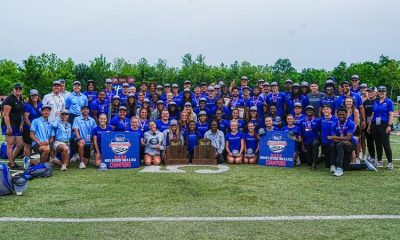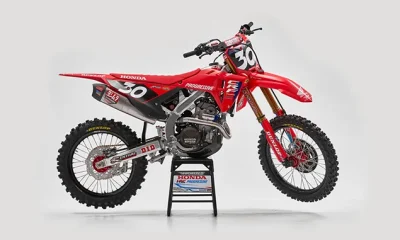
0:06 spk_0
Welcome to Yahoo Finance Sports Report, a unique look at the business of sports brought to you by Yahoo Finance and Yahoo Sports. I’m your host, Joe Pompeiano, and I’m here to coach you through the financial game. Today, we’ve got Sportico legal analyst and senior sports legal reporter Michael McCann joining us to break down the House NCAA settlement and so much more. Let’s huddle up and get right into it.We are kicking off this week with Pop’s Playbook. Why take a look at some of the biggest headlines in sports that you and your portfolio need to know. First up, Warner Brothers Discovery announced earlier this week that it will split into two separate public companies by 2026. 1 company will be a streaming and studios business that will house WBD’s film and TV properties and its streaming service HBO Max, and the other company.will be a global networks brand that will include TNT Sports, Bleacher Report, and multiple other networks. Now, this book will impact the distribution of WBD sports rights in the US as TNT Sports major events are often available to stream on HBO Max. In a call with Wall Street analysts on Monday, WBD CFO said, quote, The US sports rights will reside at global networks, and itManagement team will determine the streaming and digital rights over time, end quote. But WWE’s statement still leaves a few questions. Will TNT sports events continue streaming on HBO Max once WBD splits, or will the new global networks company look to sell the streaming rights for TNT sports events to a different partner? We’ll see how the details shake out when WBD completes its split next year.Next up, the 125th US Open takes place this weekend at Oakmont Country Club outside of Pittsburgh, Pennsylvania, and will have significant economic implications. Founded in 1903, Oakmont Country Club is one of the most historic venues in golf and will host the US Open for a record 10.This weekend. However, Oakmont is also one of the most exclusive clubs in the country, with a reported $200,000 initiation fee and $10,000 annual dues for its members. Big money will also be on the line for the 156 golfers competing at this year’s US Open. The prize pool for the 2024 US Open at Pinehurst number 2 was worth $21.5 million with champion Bryson DeShambe earning $4.3 million for his second major win.And the event will be a major economic driver for the Pittsburgh area. 200,000 people are expected to attend the US Open at Oakmont, and the United States Golf Association estimates that the event will have a $200 million economic impact on the local economy through direct and indirect spending. To finish out, Wrexham AFC, the Welsh soccer club owned by actors Rob McElaney and Ryan Reynolds, is looking to sell a minority stake in the team at a $475 million.valuation, according to Bloomberg. Wrexham, which was recently promoted to the EFL championship, is reportedly seeking to raise funds so it can upgrade its roster and be a real competitor in its new league, which sits just one tier below the top flight English Premier League. Bloomberg also noted that Wrexham seeks additional capital to fund the construction of a new 7000 seat stand, which will increase the capacity of its home stadium to over 18,000 seats.Now, talks to sell a minority stake in the club are reportedly still in the early stages, and Wrexham hasn’t yet found a new investor. But if the club can sell a stake at a $475 million valuation, the sale would represent a 19,000% increase in value from the $2.5 million that McElaney and Reynolds paid for Wrexham in 2021. I’ll also have an update on another sports investment from Ryan Reynolds here in a few moments.This week for the deeper dive, where I give you a play by play analysis of news in the sports world and its significance to your bottom line, we’re talking about the rise of Sail GP. Now, last weekend I was in New York City watching 12 50-foot catamarans race each other in front of the Statue of Liberty for Sail GP, the fastest growing sports league you’ve never heard of. Sail GP was founded by billionaire Oracle co-founder Larry Ellison, and America’s.Cup legend Sir Russell Coots in 2018 to bring sailing out of the yacht club and into the mainstream. And even though the league is in just its fifth season, Sail GP has already built a thriving business model. Now think of Sail GP as the Formula One of sailing. There are 12 nation-based teams that compete in 13 Grand Prix events around the world, featuring several 15 minute sprint style races each weekend. TheseTeams compete for millions of dollars in prize money, with the season-long champion taking home a $2 million prize alone. However, unlike Formula One, where teams with the most resources regularly win races by building the fastest courses, every sail GB team uses the same 50-foot catamaran. These sailboats reach top speeds of 60 MPH and are powered by 78-foot wing sails, turning each race into an even competition.Sal GP is also one of the most innovative TV products in sports, with augmented reality overlays that track the speed and distance of each boat, and drones and chase boats supplying incredible footage with 4K stabilized cameras. The league is broadcast in over 200 countries and territories worldwide, has a broadcast agreement with CBS Sports in the US, and drew 1.78 million viewers for last year’s race in Spain on CBS. Now, while Sal GP’s TV and in-person products are outstanding, its business.It is even more fascinating. In just 7 years, CellGB has expanded from 6 teams completely owned by the league to 12 teams and has gone from 5 races to 13 races today. 10 of the league’s 12 teams are now privately owned, with teams selling for $50 million or more to investor groups that include celebrity owners like soccer superstar Kean Mbappe, actress Anne Hathaway, and entrepreneur Gary Vaynerchuk. And just last week, actors Hugh Jackman and Ryan Reynolds became co-owners of the Australian LGB team.Additionally, Sale GP is expected to generate more than $100 million in revenue for 2025 through a diverse set of revenue streams. The league commands six-figure host fees from cities to host Sale GP events, with Auckland, New Zealand paying over $1 million to host the Grand Prix in January of this past year. And Sale GP.Receives millions each year from sponsors, including high-end luxury brands like Rolex, Emirates, and Accora Hotels. Now, Sale GP still has a long way to go if it wants to match Formula One’s global appeal and commercial success, but don’t count them out and keep an eye on their growth in the coming years because this once niche sport might just be the next big thing.We’ve made it to the one on one, a conversation where I get to break down news and sports with the key player in the industry. This week, we’re talking to Sportico’s senior sports legal reporter, Michael McCann, about the recent NCAA versus House settlement, which will pave the way for universities and colleges to directly pay their student athletes starting this year. Michael, thank you so much for joining the show today. I want to start right there. I mean, there’s plenty that we could talk about with the settlement, but if you could just do a quick explainer for people who may not know exactly what happened.
6:30 spk_1
Yeah, so last Friday, Judge Wilkin, the judge in the case, approved the settlement. The settlement is a game changer. It will have a couple big pieces to it. One is that athletes who played over the last eight years, Division One athletes will be paid over 10 years, about $2.8 billion. Now, most of that money is gonna go to football, it’s not equally distributed, but it basically compensates athletes for NIL deals they could have gotten money for broadcast, video games that were never published.So there’s a remedy portion to the settlement in terms of damages. That’s not as controversial as the other piece. The other piece that’s really gonna change college sports noticeably will be the injunctive relief, and specifically,Colleges going forward can opt into a system where they can share revenue with athletes. This is totally new, right? All the years of amateurism, that’s gone. Colleges and those in the power conferences will do it, others probably will not, but they can pay players a share of revenue up to what amounts to $20.5 million total. Now, schools that give most of that money to men could run afoul of Title IX, wouldn’t surprise me to see.Title IX litigation. The other piece to this is that there are no more limits on scholarships, so every athlete could conceivably get a full ride, which is great for the athletes, and there are now a roster limits, so the roster sizes in some cases will be a little bit smaller. College football teams are traditionally about 120, now they’re going to be 105, so some walk on athletes are gonna lose the spot that they would have had.The other piece is NIL review. So deals that are in excess of $600 will be subject to neutral review. NILO will be a new service that will basically try to figure out if the deals are in fact reflecting fair market value. If not, the athlete can dispute that in arbitration.So there’s a lot going on. If you’re a college athlete, here’s the thing, you now can get NIL deals plus a full ride plus a share of revenue. So, so for this is why we’re seeing athletes now sue to stay in school, right? Traditionally people want to leave school and go to turn pro. Now people want to stick around.
8:48 spk_0
Yeah, so Michael, my first question off of that, and I have plenty, is how do collectives fit into this, right? Because I think people over the last number of years have heard a lot about collectives, and the traditional college football fan especially probably views collectives as this organization that is essentially funneling money from boosters to athletes to.For their school. Now some of these collectives are a little bit more legitimate where they’re actually sourcing and sort of acting as an agency, but now that the school can pay you directly and those collective kind of like boosters deals are taken out of it because they have to be legitimate NIL deals, where does that leave the collective industry today?
9:22 spk_1
Yeah, you hit it, Joe. So the work that collectives were doing is now essentially shifting to the schools and athletic departments. Some of these collectives will be folded into athletic departments. Some of the people might be brought into the athletic departments, we’ll we’ll have to see on that. So the collectives now, as you say, could still do NIL deals, but they’ll be subject to this review process. They can’t be paid for play, so that’s gone.Uh, now what they could do is marketing, they could do, uh, perhaps brand development. I mean, there are a lot of folks with in collectives that are really talented at business dealings, they may be able to provide some assistance, but their role will probably shrink being honest about it. Now, there may be some collectives that still do what you said, that they still try to funnel money in, and, you know, this will, this will be a good test of how the enforcement process works.Because we could certainly see a scenario where NIL collectors, even if they’re not operating as a collective, they’re just operating more in the traditional what we grew up with sort of money going to athletes uh under the table. I, I don’t know if that’s gonna happen, but we’ll have to see.
10:26 spk_0
So how are schools actually gonna be paying this money, right? Where is it gonna be coming from? Because if you think about the big conferences, the SEC, Big 10, whatever, ACC, those schools can afford it based on the money that they’re getting from the conferences every year from media rights, but there’s a bunch of smaller conferences sort of on the longer tail, that maybe can’t afford $20.5 million especially just for a football team. How are schools thinking about funding this and how many schools do you think will actually reach that limit?
10:51 spk_1
Yeah, I, I think many will opt in but not go to 20.5 million, and Joe, you’re hitting at a real set of problems for colleges right now, cause it’s not just this, it’s not just coming up with 20.5 million or whatever fraction of that. It’s also the fact thatThe population pool is going down for colleges over the next several years, there’s the enrollment cliff hitting universities where there will be fewer US aged kids that will be applying to college, so there’s going to be more competition for students, meaning more uh scholarships and other ways of trying to entice students to go. And then there’s the fact that grants are being cut off, right? We know the federal government uh disposition is now to be more scrutinizing of grants or just cutting them off.Uh, also, if it’s a more difficult entry point for international students who tend to be full tuition payers, they’re having more difficulty now under the current administration. So there’s a lot of pressure points hitting schools. What are they gonna do to come up with this money? They’re gonna, I, I, you know, we’ll see what it would be raising student activity fees. I know that’s unpopular, but colleges sometimes do that as a way of making money. They may have to,
12:02 spk_0
what does that exactly mean? What, what, what do you mean by student activity fee?
12:05 spk_1
It means if you and I are classmates at a college and we’re paying $38,000 now we get a fee tacked on that used to be $600 and is now $1200 and our parents complained to us saying, why are we spending all this money, you better be studying, right? So it’s that fee, it’s that, it’s that fee that goes on the student, that’s one possibility and restructuring.I mean, this is gonna happen regardless of 20.5 million. We’re gonna see with lower enrollment, colleges, I think, go into serious restructuring where they need to maybe cut some departments, maybe even cut schools. I, we don’t want to see that happen, but there there are certain realities kicking in.
12:47 spk_0
Yeah, it’s sort of a difficult situation because if you look at the schools that are successful, like really successful in football, even schools that just have a lot of attention around them, like in Colorado or in Alabama, of course, or schools like that, the football program, uh, drives a lot of money for the school from enrollment and all that kind of thing, especially with out of state students that are charged more money. All right, everyone, we’ve got to take a quick break, but we’ll be back with more of my conversation with Michael McCann after this.Welcome back to Yahoo Finance Sports Report. I’m your host Joe Pompriano. I’m here with Sportico legal analysts and senior sports legal reporter, Michael McCann. I’m curious how you think about new revenue opportunities, right? Like, uh, I think it was last year, or maybe even 2 years ago at this point, we saw Tennessee implement the, uh, the tax on tickets, basically saying that this money was going to be used to fund NIL activities.And a lot of the fans actually seemed quite OK with it, right? Like if you’re paying a tax, at least you know what it’s going for. A lot of them are probably donating to NIL collectives anyways, at least in a smaller amount. So a 5% tax or whatever it ends up being on the ticket, uh, wasn’t a deal breaker for them. But I’m curious if you think we’ll see either more schools implement that or any other ideas that you’ve heard that they might be be implementing as well.
14:03 spk_1
Yeah, I mean, you’re right, the tax was surprisingly not, I didn’t receive a hostile reaction, at least from what we could tell. I, I do worry that that that model may be unpopular, or if we see it play out at other schools, the idea of paying a tax, I could see some objections to now, maybe it doesn’t matter, maybe the sports are so popular thatThey can just raise fees. Uh, you know, other ideas, I think better media rights deals is part of it, right? How, how is college sports being monetized in terms of not just TV but streaming? Are there avenues left unturned? Are there opportunities for really better negotiations and, you know, we’re seeing now general managers hired by schools. Part of that, part of their job is gonna be coming up with ways of expanding the revenue pool.So we’re gonna see some business folks brought in, uh, as you know, athletic departments have traditionally been run by, uh, you know, people like me, lawyers or compliance folks, and now I think we’re seeing some more business people brought in that may have creative ideas, particularly with licensing, particularly with with monetizing intellectual property rights, there’s all sorts of ways, stones that maybe there’s low hanging fruit as well, but there are certainly stones that haven’t been all turned.
15:19 spk_0
Yeah, we may be getting the NFL model where there’s select games on Netflix and Peacock for the SEC and other conferences like that. Um, but Michael, I would love to hear just your thoughts on how sustainable the $20.5 million dollar number is, right? Like, are we gonna go substantially higher than that, or do you think it’ll stay sort of there for a while?
15:36 spk_1
It’s projected to grow gradually about 10 to $12 million over the next 10 years, and it’s based on a formula. It’s based on a formula that the settlement has. So, I mean it could grow, right? It could grow if revenues go way up. And if, and if it turns out that college sports is worth a lot more than it’s generating, which some people believe, some people believe that that college sports should be.You know, if, if they had the, the insights of the NFL, they would be able to generate more revenue. Maybe that’s true. But I think the expectation is that it will be a fairly slow growth of that figure, which is also interesting because think about it, that’s 20.5 million for everyone in the athletic department, right? I mean, there are a lot of, a lot of athletes in that department. Does the quarterback say, I, I want 5 million andYou know, or does a school say, let’s put all of our eggs in the best running back. Let’s go all out for a running game. Or maybe a school says, we want, we want basketball to be our focus. We think we can put together a great team, forget the football team. We know we’re not great at that. We’re gonna put together the best basketball team, and we’re gonna use that 20.5 million on that. There are all these really interesting permutations that it that it seems like pro sports, right? This sort of sounds like uh pro sports.
16:52 spk_0
Yeah, it’s sort of an interesting look at it because it’s almost like Moneyball, right, where you’re trying to find where you get the best return on your investment, whether that’s specific players or whether that to your point with the basketball, uh, analogy there, whether that’s an entirely different team where you’re competing kind of as a bigger fish and smaller pond. It’ll be really interesting to see and, and again, to your point, uh, it’s part of the reason.Why a lot of these schools are hiring GMs and capologists and different things like that. But I, I would love to just double click on one thing you mentioned earlier in this conversation, which was some of the, uh, alternative sports teams, some of the Olympic sports, some of the non-revenue generating sports, and just get your feedback and insight on on how those uh teams might be uh impacted by the settlement.
17:31 spk_1
Yeah, I mean may expect that they will be adversely impacted by the settlement, that the settlement will funnel more money towards the revenue generating sports. Now, let’s remember, most colleges are not going to opt into the system. So in a lot of schools, the world’s not changing. The Ivy League is not changing. They’re keeping the same model. They’re not paying players. So, you know, in a way at the top schools, it’s possible that some sports, particularly the Olympic sports, particularly the sports that are played by men.Because Title 9 remains, remains an important law that will ensure that there are equal opportunities for women athletes. Uh, that, that may make it harder to say cut a women’s team than, uh, depending upon which men’s team we’re talking about to bring a number of roster spots. So yeah, I mean, I, I, I think the expectation is that the money will, I mean, it’s already mostly for certain sports, but I think that effect will be amplified.
18:28 spk_0
Yeah, it’s sort of an unfortunate situation because if you’re looking at a team that, you know, spends $2 million a year on salaries and expenses and other things like that, that’s $2 million that could go towards this for the football team that’s bringing in a lot of academics and things like that from a monetary standpoint, it certainly makes sense. Um, the, the last thing I want to touch on there is just the NIL go portion, right? You mentioned earlier that deals that are legitimate NIL deals, the Doctor Peppers of the world and other businesses like that.Those have to go through and get approved by NILO. Where do you think the line is drawn on this? So like, first off, who’s actually enforcing this? And then second off, like, where is that line gonna be drawn between what’s legitimate and what isn’t? Because as we know in college sports, there’s, you know, car dealerships in the hometown that uh are sort of legitimate, but also sort of not legitimate.
19:15 spk_1
Yeah, so Deloitte is the key player in this arrangement. They’re gonna be running NILO with the College Sports Commission. They’re gonna have authority. So what is, what is fair market value? Some would say fair market value is whatever the market will pay you, right? So if that car dealer wants to offer you, Joe, $2 million you’re worth 2 million. I mean that that that’s a not illegitimate argument.Now, that, that argument though is not one the NCAA would embrace. The NCAA would say, well, that money is really going to Joe because we want Joe to come to our school. He, his actual value in terms of his image, his likeness, uh, that’s not nearly worth that much. What we’re really paying him is because Joe’s this great football player that we want in our school. So this new entity will look at data points. They’ll look at, for instance, what other athletes in the same position.Would get an endorsement deal, and that car dealership, well, what have they paid in the past for endorsement deals? If they pay 10,000 bucks and they’re on local TV and then suddenly they’re offering you $2 million that that’s gonna raise some questions about the legitimacy of that transaction. And the smart thing that they did with this settlement is they have arbitration.That that is, that cannot be stressed more.
20:27 spk_0
Yeah, it sounds like we’re gonna have a lot less legitimate NIL deals whether people aren’t just gonna want to file them in time or whether they’re gonna get denied, it could be either, but uh certainly seems like there will be less. But thank you so much for joining us today, Michael. I learned a lot and I’m sure everyone else did too.
20:40 spk_1
Thanks, Gerald. Appreciate it.
20:43 spk_0
The clock is winding down here, but we have just enough time for some final buzz. So let’s talk about the trading card market for Oklahoma City Thunder superstar Shai Gillis Alexander.The NBA finals are in full swing, with Game 4 between the Oklahoma City Thunder and Indiana Pacers taking place tomorrow night at Game Bridge Fieldhouse in Indianapolis. And while there has been plenty of action to discuss on the court, one player in the finals is dominating the collectibles market off the court. According to data shared at Yahoo by professional sports authenticator, Oklahoma City Thunder superstar Shai Gillis Alexander is the most.Player in this year’s NBA Finals. Now, it’s not necessarily a surprise that the 26-year-old guard is popular among collectors. The Thunder have a chance to win their first ever NBA championship after a historic 68 win season. And SGA won his first NBA MVP award last month with 71 out of 101st place votes. But SGA isn’t just PSA’s most collected NBA Finals player.year. He’s the most collected player by a wide margin. PSA’s top three most collected 2025 NBA Finals players include SGA at #1, his Thunder teammate Chet Holmgren at #2, and Pacers superstar guard Tyrese Halliburton at #3. However, PSA’s data says that SGA has nearly doubled the cards graded than any other 2025 NBA Finals player this season.And what’s even crazier is that SGA alone has 2 times the number of cards greater than the entire Indiana Pacers roster combined. Now, this NBA final series is far from over. If Tyrese Halbburn keeps making buzzer beaters and the Pacers pull off a championship upset, Halliburton could skyrocket his value among card collectors. But as of right now, there’s a huge gap between SGA and every other NBA Finals player, and that gap could become even bigger if he adds an NBA championship to his resume this season.We’re all out of time, so it’s officially game over for this week. Thank you so much to Michael and for all of you for joining us. Please make sure to scan the QR code below to follow Yahoo Finance podcast for more videos and expert insights and catch us every Thursday wherever you get your podcasts. I’m your host, Joe Pompeliano. See you next time.
22:48 spk_2
This content was not intended to be financial advice and should not be used as a substitute for professional financial services.
6


